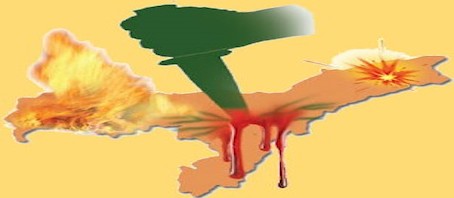A poem, Write Down ‘I am a Miyah’, by Hafiz Ahmed, a Miya scholar himself, helps us understand the “Miya culture” that we need to pay attention to. If we want to have some understanding of the electoral dynamics unfolding in Assam and building up for the coming legislative assembly elections, that is absolutely necessary.
In 2016, Hafiz Ahmed wrote, in an East Bengal dialect, this poem which perhaps sums up what being a ‘Miya’ in Assam could mean. He wrote:
Write Down, I am a Miya, My serial number in the NRC is 200543. I have two children, Another is coming, Next Summer. Will you hate him, As you hate me?
Some lines later, he adds: I have nothing but anger in stock. Keep away! Or Turn To Ashes!
(English translation done by Shalim M Hussain).
This poem seeks to explain how ‘Miyas’ have embedded into the Assamese society that they have been living in for a long time. Some ‘Miyas’ have been around for more than three generations, initially encouraged to migrate to Assam from nearby East Bengal ruled by the British. Sowing the seeds of discord in the Assamese society was an undeclared aim of the British and they succeeded rather well.
In July 2019, Hafiz had to tender an apology as he expressed “regret” if his writing had hurt “Assamese sentiments”. He was booked, along with nine others, after a video of his poem, regarding the alleged discrimination towards the Bengali-speaking Muslims of Assam, was shared online.
A section of the original inhabitants of Assam treat them as Bangladeshi “infiltrators” and refer to their roots in East Bengal. Most ‘Miyas’, however, protest their innocence saying their forefathers had come to Assam to settle in uninhabited islands in Brahmputra river decades ago, long before Bangladesh was even born in December 1971.
‘Miyas’ constitute about one-third of Assam’s population now and a very large section of the Assamese see them as “infiltrators” affecting the demographics. Opposition to their continuing influx was behind the rise of Assam Gana Parishad (AGP) decades ago. Prafulla Kumar Mahanta as Chief Minister of Assam became a household name during that phase. Unfortunately, many of the promises that the Central government of the day had made to the AGP, and All Assam Students Union (AASU), remain unfulfilled till day. Over three decades after these were made by a government headed by Rajiv Gandhi.
Demographics and language, Assamese versus Bengali, is a super sensitive issue in the north-east state once ruled by powerful Ahoms. To all outsiders, Assamese and Bengali look the same, since they use the same script, and have barely an alphabet or two that distinguishes the two. Yet, the Assamese-Bengali divide remains deep rooted, and the wound starts festering just by a causal scratch.
Interesting as it may seem, Hafiz is on record as having said that his poem was not about NRC (National Register of Citizens), through a reference to NRC is very much there! The ‘Miyas’ had initially migrated to lower Assam areas. Though they are to be found in about a dozen districts in significant numbers now.
Incidentally, Badruddin Ajmal, the lone Lok Sabha MP from Assam, of the All India United Democratic Front (AIUDF), is among those who have decided to boycott President Ram Nath Kovind’s address to joint session of Parliament. He is perhaps the best known face of the ‘Miyas’ in Assam today and his party had won 13/126 seats in the legislative assembly elections in Assam in 2016.
His party, AIUDF, bats for the ‘Miyas’ and it’s electoral symbol is lock and key. It has remained part of the United Progressive Alliance (UPA) led by the Congress. Assam BJP leaders have accused the ‘Miyas’ of undermining the Assamese culture.
In the recent past, in November 2020, a proposed “Miya Museum” to reflect the “culture and heritage” of people living in char-chaporis (floating islands in Brahmputra) had stirred up a controversy. Congress MLA Sherman Ali had then written a letter to the state government asking it to expedite matters related to the museum in Guwahati’s Srimanta Sankardeva Kalakshetra.
In response, Assam BJP minister Himanta Viswa Sarma had rejected the demand saying the “Char Anchal of Assam” had no “separate identity”. He asserted that the Assam government will not allow any ‘Miya museum’ in the Kalakshetra.
Given the way things are shaping up in the run-up to the assembly elections, it is most likely that we will hear a lot about ‘Miyas’ and char-chaporis of Assam.
Sant Kumar Sharma, a seasoned journalist, is an authority on Jammu and Kashmir. Two of his books on Article 370 and Delimitation are already out. The third one on Indus Waters Treaty is now out and could be bought here.
Sant began as a teacher but after six years, joined the Indian Express, Chandigarh in 1990, the year when terrorism was taking its first step in J & K and soon there would be exodus of lakhs of Kashmiri Pandits from the Valley. He subsequently worked for The Statesman, The Times of India and Star News among others. He is based in Jammu since May 2000.


